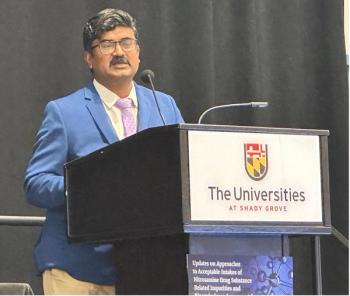
Karlstad University Researchers Explore Supercritical Fluid Chromatography with Water and Trifluoroacetic Acid
Scientists from the Swedish university analyzed the different ways water and trifluoroacetic acid (TFA) affect peptides in sub- and supercritical fluid chromatography (SFC) separations.
In a recent study led by scientists from Karlstad University in Karlstad, Sweden, scientists analyzed the different ways water and trifluoroacetic acid (TFA) affect peptides in sub- and supercritical fluid chromatography (SFC) separations. Their findings were published in the Journal of Chromatography A (1).
Supercritical fluid chromatography (SFC) is a separation technique similar to gas and liquid chromatography; however, unlike those techniques, in SFC, a supercritical fluid (a fluid existing at a pressure and temperature above its critical point) is used as a mobile phase. (2,3). This technique has become popular in recent years, as shown by how accelerated its use has been documented in publications. One trend is to extend the range of compounds that can be separated by introducing polar additives such as water to the co-solvent; these modified mobile phases have been used to facilitate the separation of peptides, nucleic acids, and proteins.
In this study, the scientists wanted to further denote conditions with the abbreviation SFC, covering subcritical and supercritical chromatography. Specifically, three peptides and their retention were studied using analytical and overloaded conditions at different concentrations of trifluoroacetic acid (TFA) and water added to the co-solvent methanol (MeOH). Four columns with different stationary phase properties were evaluated in this study, with the overall goal being to gain a better understanding on how column chemistry and both water and TFA in the co-solvent affect the analytical and overloaded elution profiles using multivariate design of experiments and adsorption measurements of co-solvent components.
Using multivariate experimental design modeling showed that on average, water had approximately five times higher effect on the retention than the addition of TFA. The results also show that retention increases when TFA and water were added to the co-solvent on all columns except for the cyanopropyl (CN) column, where retention actually decreased. When examining the effects of adding water to the co-solvent, there was evidence of a hydrophilic interaction liquid chromatography (HILIC)-like retention mechanism, which was found on the three other columns with more polar stationary phases. On the CN column, water acted as an additive, decreasing retention due to competition with the peptide for available adsorption surface.
Adsorption isotherm measurements of the polar solvent MeOH showed that MeOH adsorbs much weaker on the CN column than the other columns. Adding TFA and water to the co-solvent substantially sharpened the elution profiles under both overloaded and analytical conditions.
The researchers found that the dominant factor affecting retention is the slope of the gradient followed by water in the co-solvent, while the least important factor is addition of TFA. Further, adding water and TFA to eluents improved the peak shape for all peptides on all the investigated columns. However, TFA was also shown to adsorb weakly on the stationary phase; as such, rather than acting as an additive, it will typically decrease the apparent pH of the eluent and increase the partition of peptides in water-rich layers. These findings further our understanding of how water and TFA can act in reaction to different chromatographic situations.
References
(1) Samuelsson, J.; Leśko, M.; Thunberg, L.; Weinmann, A. L.; Limé, F.; Enmark, M.; Fornstedt, T. Fundamental Investigation of Impact of Water and TFA additions in Peptide Sub/Supercritical Fluid Separations. J. Chromatogr. A 2024, 1732, 465203. DOI:
(2) Supercritical Fluid Chromatography. Elsevier B.V. 2024.
(3) Supercritical Fluid. Elsevier B.V. 2024.
Newsletter
Join the global community of analytical scientists who trust LCGC for insights on the latest techniques, trends, and expert solutions in chromatography.




